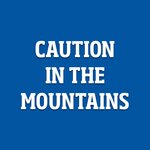THE NUMBERS OF TRENTINO
Big numbers and small numbers. Numbers that represent Trentino and in certain cases highlight unique aspects or curiosities. An example is the number of trees: 1,000 per capita. Or the number of mountain lakes: 297, which represent 10% of the total number of lakes across the Alps
Territory
- Area: 6,207 square kilometres
- Highest peak: Cevedale, 3,784 m a.s.l.
- Highest peak entirely within Trentino: Presanella, 3,556 m a.s.l.
- Largest glacier: Mandròn, Adamello, 1,630 hectares
- Number of lakes: 297
- UNESCO sites: 4
Population
- Number of inhabitants: 542.739 (at 1 January 2020)
- Density: 87 inhabitants/km2
- Number of families: 238.029
- Municipalities: 175, of which 75% are at an elevation of 1,000 metres or above.
- The six largest municipalities: Trento, Rovereto, Pergine Valsugana, Arco and Riva del Garda
- The six most beautiful hamlets in Trentino as listed in the guide "Borghi più belli d'Italia": Bondone, Canale di Tenno, Mezzano, Vigo di Fassa, Rango, San Lorenzo Dorsino
- The six “Bandiera Arancione” (Orange Flag) of the Italian Touring Club: Ala, Ledro, Levico terme, Tenno, Molveno, Caderzone
Environment and sustainability
- Territory under environmental protection: 30%
- Extension of forested areas: 63%
- Plant varieties present: 2,359, of which 17 are endemic to Trentino
- Number of trees: 500,000,000 or about 1,000 per inhabitant
- Protected animal species: 125
- Protected flora species: 35
- Deer, roe deer and chamois: approx. 67,000
- Brown bears: 50 - 60 individuals
- Golden eagles: 60-65 pairs
- In Trentino, 86.9% of electrical energy is derived from renewable sources, almost exclusively from hydroelectric plants (78,7%).
- Tourist accommodation facilities certified Ecolabel: 48 (first place in Italy)
- Differentiated collection of urban waste: 76.5% of urban waste collected is differentiated.
A network of culture
- 86 museums
- 200 castles
- 80 fortifications from WW1
- 8 Ecomuseums
- 86 public libraries
- 50 special libraries
- 47 public reading areas
- 1,138,966 visitors to museums in Trentino in 2017 (of which 453,796 to the Muse)
Discovering the land
- 1,165 marked trails (including via ferrata) that extend for a total of 5,843 kilometres
- 13 long trekking routes (with more than three legs) within Trentino
- 11 cycling trails for a total of 431 km served by 19 refreshment points “Bicigrill”
- In 2016, 2 million tourists made use of the cycling trails in Trentino
- 3 Food & Wine Trails
The world of snow
- Number of skiing slopes: 612 for a total of 800 km of which:
- Blue slopes (easy): 36%
- Red slopes (medium difficulty): 52%
- Black slopes (difficult): 13%
- Snow making facilities: 90%
- Ski lift facilities: 227
- Total hourly carrying capacity of ski-lift facilities: 350,000 people
- Snowparks: 25
- Cross-country skiing centres: 23 for a total of 500 km of marked circuits
- Ski instructors: 2,694
- Alpine Guides: 215
Hospitality: it’s in Trentino’s DNA
- Number of hotels: 1,487 that can accommodate a total of 91,939 guests, of which:
- 905 classified 3-Star
- 204 classified 4-Star
- 6 classified 5-Star
- Other accommodation facilities: 1,780 that can accommodate a total of 77,881 guests, of which:
- Camping grounds: 68
- Mountain huts (rifugi): 146
- B&B: 460
- Farmhouses (agritourism) 341
- Private guesthouses: 24,996 with a total capacity for 114,187 guests
- Holiday homes: 44,956 that can accommodate 199,726
- Total guest capacity: 483,733
Tourist flow
- Arrivals: 5.993.206 per year
- Overnight stays: 31.970.580 per year
- Average lenght of stay across hotels accommodation: 4 days




